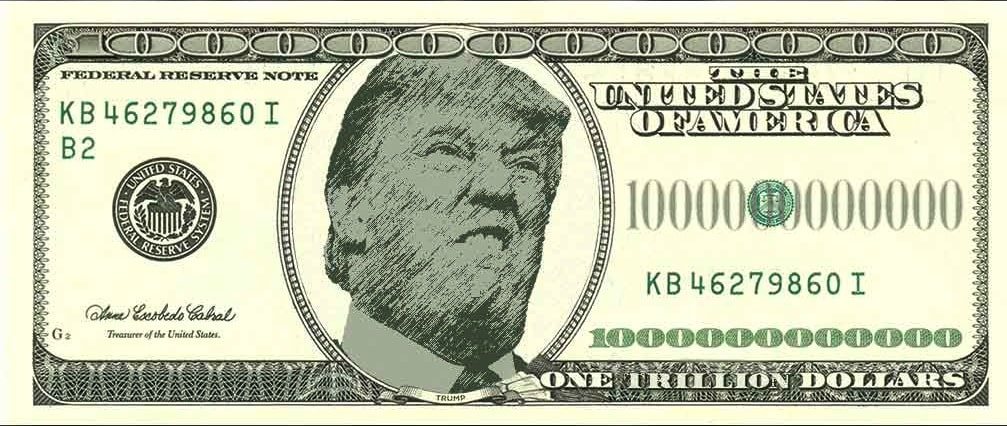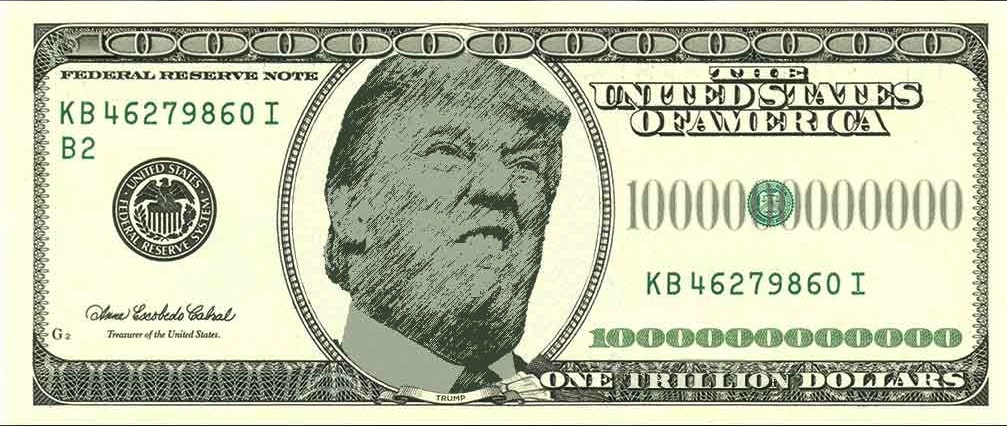
The Trump administration announced Monday its support for an additional 54 billion dollars in spending for military and national security programs in fiscal year 2018 and a 30 billion dollar bump for such spending in fiscal year 2017. Meanwhile, 54 billion dollars in spending decreases in other areas in fiscal year 2018 are being put forward as an offset.
The story the White House is promoting is that, because of the offsetting cuts, the 54 billion dollars in additional spending will not increase United States government spending in the first fiscal year of Donald Trump’s presidency over the amount of Obama administration spending. This story is likely fiction, not reality.
You can count on Trump to determinedly stand by his desired military and national security spending goals, as well as his spending goals for other areas where he has pledged expansive US government actions, such as infrastructure and law and order. But, there seems to be little reason for confidence that Trump, who sees himself as a great dealmaker, won’t deal away much of his proposed cuts and even agree to various new increases in spending to ensure that his preferred additional spending receives congressional approval.
It will likely take significant dealmaking to push through Congress as large of a military spending increase as Trump proposes, even with Republican majorities in the House of Representatives and Senate. For some perspective on what $54 billion in additional military spending means, Alex Emmons notes at The Intercept that the “increase alone is roughly the size of the entire annual military budget of the United Kingdom, the fifth-largest spending country, and it’s more than 80 percent of Russia’s entire military budget in 2015.” Expect even “pro-military conservatives” in congress to jump at the opportunity to toss some money for their own pet projects into the spending pot once the legislative bargaining is underway.
Interviewed Tuesday at Fox News, Trump indicated that, despite the rhetoric coming from the White House, he is looking elsewhere than government spending cuts to pay for his desired increase in military spending. Asked where he will find the money to pay for the increase, Trump said that at least some of the money “is going to come from a revved up economy.” Trump elaborates:
I mean, you look at the kind of numbers we’re doing, we were probably [gross domestic product (GDP)] of a little more than one percent. And, if I can get that up to three or maybe more, we have a whole different ballgame — it’s a whole different ballgame. And that’s what we’re looking to do.
There you have it. Trump knows that the additional military spending will cause overall spending to increase, and he is looking to increased economic growth in America to create extra tax payments to the US government to pay for the spending increase. First, it is important to note that this funding explanation is a very different story than the prediction of no net increase in spending that accompanied the 54 billion dollars announcement. Second, this funding explanation means an increase in tax payments overall to the US government. Third, this funding explanation is hitched to achieving nearly a tripling or more of GDP. Suppose that does not occur. Suppose GDP does not budge much, or suppose GDP decreases. This budgeting depends on faith, not reason.
While the proposed 54 billion dollars in additional military spending is a very large sum, it is significantly less than the ten percent increase of US military spending that it is often described as in the media. US military spending includes much more than the money appropriated by Congress to the Department of Defense. As College of William & Mary Professor and Ron Paul Institute Academic Board Member Lawrence Wilkerson explained in a Monday the Real News Network interview, there is “really, a 1.1 or [1.2] trillion dollar national security budget, when you throw in nuclear weapons, the Department of Energy, the [Department of Veterans Affairs], and all the rest of the security budget in there.” Wilkerson continues:
It’s just ridiculous. We have a bigger national security budget than the rest of the world combined. It’s absurd.
As I mentioned in a December 31 interview at KFAR radio in Fairbanks, Alaska, we have been through such spending dealmaking before — when Ronald Reagan was president in the 1980s. I predicted that, similar to what happened then, the result this time will be a “compromise” of “increasing spending across-the-board.”
Sheldon L. Richman related in a 1988 Ludwig von Mises Institute article that spending during the Reagan administration rose 60 percent in nominal terms and rose more in relation to “national income” than during the preceding Carter and Ford administrations. This occurred in part because President Reagan, in order to secure the spending he sought for programs including the military, was willing to accept spending increases in areas where he said he preferred spending decreases. For example, Richman notes that, during Reagan’s presidency, spending on the Department of Education more than doubled despite Reagan’s support for abolishing the department.
Of course, many people will complain that the Trump administration’s proposed balancing of spending increases and cuts leaves spending too high, as there are many more places where US government spending should be reduced than Trump will endorse.
Indeed, Ron Paul has often argued that military and national security spending are among the areas where large spending reductions are in order. In support of this argument, the libertarian communicator and former presidential candidate points to the difference between military spending and defense spending. Military spending, Paul explained in a November editorial, includes “money spent each year not to defend the United States, but to enrich the military-industrial complex, benefit special interests, regime-change countries overseas, maintain a global US military empire, and provide defense to favored allies.” Beyond the death and destruction overseas, as well as the blowback in America, that such spending can induce, Paul notes in the editorial that the spending contributes to the threat of “economic collapse” in America.
In contrast to military spending, there is actual defense spending that would cost much less in terms of dollars and avoid the additional costs of lives lost and property destroyed in offensive military actions. Adopting a defense budget, instead of a military budget, would also seem to be in line with Trump’s campaign slogan of putting “America First” — a slogan that was employed decades earlier by opponents of sending the US military to war overseas.
Yet, there is little indication that the Trump administration has any intention of moving toward a foreign policy centered on nonintervention. The Trump administration has not begun any large-scale reduction of the US military presence in Afghanistan, the Middle East, Africa, or elsewhere. Neither has the Trump administration backed off from Trump’s support for taking a more adversarial position toward Iran. Even in one area where many people had hope for reduced tension — US relations with Russia — the Trump administration is continuing the Obama administration’s confrontation policy via the deployment of US troops near Russia.
The Trump administration seems devout in its support for increasing military spending. If this goal cannot be accomplished easily along with the adopting of balancing spending cuts in other areas, expect the bargaining to begin. Expect also that any significant effort by the administration to achieve the no net increase in spending goal will vanish.


